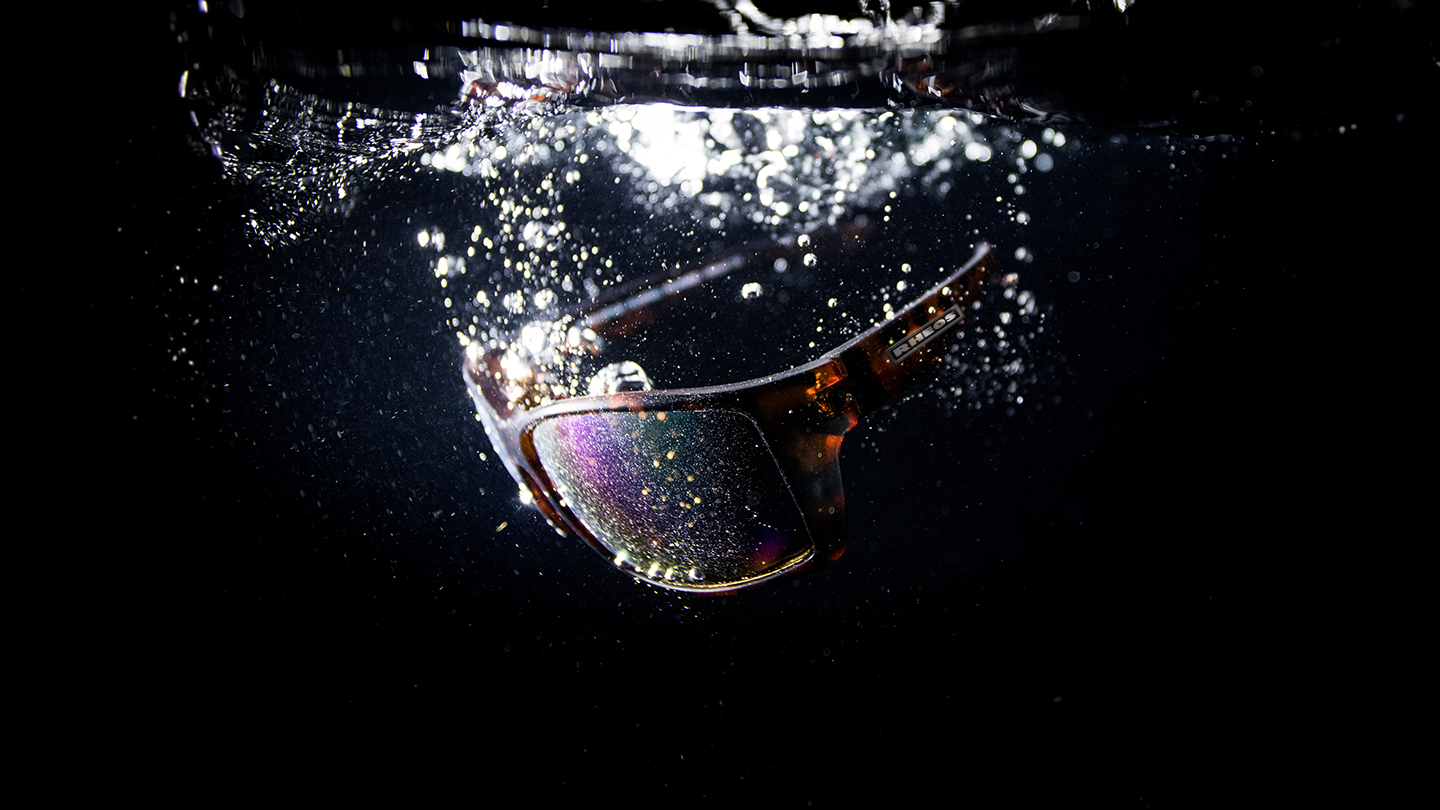Why are sunglasses polarized?
The sun has been shining brightly since the beginning of ever (for us humans, that is), and as a result, sunglasses have been around for centuries. We’ve all needed to shield our eyes from the glint and glare of the blazing sun or even snow so we could see — and thankfully, shaded lenses have come to our rescue. What started out as slabs of smoky quartz in 12thcentury China have evolved into sophisticated feats of engineering. New technology allows sunglasses to protect against harmful UV rays, correct poor vision, transition from light to dark, and even reduce glare. Polarized lenses are found so often now that it’s hard to remember a time when they weren’t around. So when did this really take off, why are sunglasses polarized, and how did polarized lenses get so popular?

The history of polarized sunglasses
Polarization has become increasingly popular in recent years, but the history of the technology goes back to the early 20th century when a man named Edwin H. Land was born in Bridgeport, CT. After studying chemistry for just a year at Harvard University, Land decided to leave the collegiate life behind and focus on his experimentations and innovations fulltime. He developed the first inexpensive filters for polarizing light, which means they can block horizontal light.
More than just a laboratory success, Land was able to apply this technology to sunglasses and photo filters for commercial use. Wall Street investors took note, and he received funding to start his own business in 1937. The Polaroid Company was born. The company found its first sunglasses market in air pilots, who used the new technology to reduce sun glare in the intense sky-high conditions. In fact, that’s how the aviator style first came to be.
While the Polaroid Company is best known for its quick-print camera technology, the company still manufactures polarized lenses today.
Other uses for polarization technology
What do sunglasses and 3D movies have in common? Both rely on polarization to work. Yep, believe it or not those funny paper glasses you wear at the IMAX theater are actually polarized. What you see at the movies is two films playing on the same screen through a polarizing filter. The glasses are made out of the same type of filter and work in a way that makes the lenses focus on just one of the films playing. This play on depth perspective using the filters is how you create the 3D effect.
Way back in World War II, the father of polarization himself Edwin Land worked with the U.S. military to develop dark-adaptation goggles, target finders and smart-guided bombs. He even used polarized filters to create a tool called the Vectrograph, which revealed hidden enemy positions in photos taken from the air.
And speaking of photos, photographers today take advantage of one of two types of polarized filters. Using a circular filter over their camera lenses, photographers are able to increase color saturation, correct color and add depth to their photos. A linear filter, however, only allows a specific angle of polarized light to pass through. It’s best for scattering random polarized light but can affect autofocus features in digital cameras.
Polarization also has applications outside of photography and film. Polarized filters are often used to stress-test plastic, which helps manufacturers identify any areas where structural failure is likely to occur. The next time you drop and crack your reusable water bottle, you’ll probably wish the manufacturer used polarized stress testing. Most people think of sunnies when they hear the term “polarization,” but the technology has a variety of uses.
So how does it work?
The lenses on your sunglasses use a chemical film, or filter, that creates polarization. These films are created using a polyvinyl alcohol or iodine-based dye. The dye absorbs onto the surface of the film. Long-chain molecules then stretch across in one particular direction (horizontal or vertical). The way the filter is aligned dictates which light it will block. The position of your lenses controls just how much polarized light is removed.
So how do you know if you have polarized lenses? Simply rotate the lenses. Regular sunglasses will just appear darker and keep the same tint as you turn them whichever way. But polarized ones will change. To check the polarization of your pair of sunnies, face a computer screen and spin your glasses around like a clock. When you turn the glasses to a certain angle, the computer screen will completely black out. That’s polarization in action.
Polarized sunglasses popularity today
While polarization has gotten plenty of use since its invention, the most commonly recognized application is eyewear. The technology has been around for almost a century, but its popularity in sunglasses has skyrocketed in recent years. In fact, many people refuse to buy sunglasses without polarized lenses, and for good reason. By blocking horizontal light, polarized lenses block any sort of reflected light (like the glare on the hood of your car or bouncing off the ocean’s surface). And glare is more than just an annoyance. It can distort your view and even cause depth perception concerns – which can be pretty dangerous when you’re driving a car or in another high risk scenario.
Polarization isn’t a fashion trend, it’s highly useful on the road or outside. The most common situations that call for polarized shades include:
- Driving
- Boating
- Fishing
- Surfing
- Paddling
- Flying (an aircraft, unless you’re Peter Pan)
And polarization isn’t just popular because of its anti-glare benefits. It’s also helpful for reducing eye stress and is essential for those who spend time outside. Today, polarized lenses have become a must-have feature for eyewear shoppers largely due to a reduction in price. Polarized lenses are becoming more and more accessible. What used to be reserved for sunglasses that cost several hundred dollars can now be found in affordable sunglasses. Improvements in production efficiency have helped to drive down the lens prices while maintaining quality and clarity. The technology is ubiquitous and can be found in luxury eyewear brands, high performance sport frames and even emerging eyewear categories like floating sunglasses.













